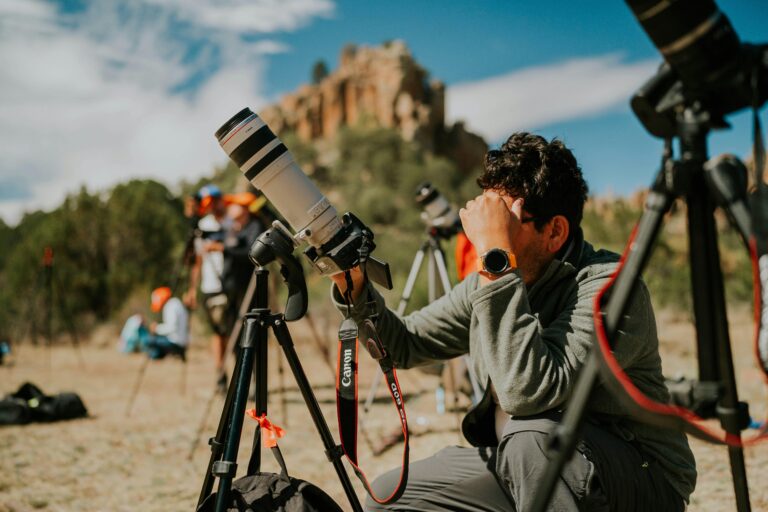Starting a photography business without a budget might seem like an uphill battle, but in 2025, it’s more achievable than ever. Thanks to free digital tools, social media, and online marketplaces, you don’t need a massive investment to get started. Many of today’s successful photographers began with little more than a camera, a passion for photography, and a willingness to learn. Whether you’re using a smartphone, borrowing equipment, or working with free editing software, you can build a thriving photography business from scratch. The key is resourcefulness, creativity, and persistence.
This guide will walk you through the essential steps to launching your photography career without spending a fortune. From building a professional portfolio with no budget to marketing your services using free platforms, we’ll cover everything you need to get your business up and running. By taking advantage of social media, networking, and offering affordable services at the start, you can build a reputation and attract paying clients. Whether you dream of shooting weddings, portraits, events, or products, this is how you can make your photography business a reality—without breaking the bank.
Building a Portfolio Without Spending Money
One of the most critical steps in starting a photography business is creating a strong portfolio. Potential clients will want to see examples of your work before hiring you, and luckily, you don’t need a budget to get started. Begin by offering free or discounted sessions to friends, family, or local businesses in exchange for permission to use the photos in your portfolio. If you’re interested in portrait photography, set up casual shoots in outdoor locations with good natural lighting. If you want to explore product photography, use everyday household items and experiment with creative compositions.
Even if you don’t own a high-end camera, don’t let that hold you back. Many successful photographers started with just a smartphone. Today’s smartphones have excellent camera technology, and with the right lighting and editing, you can produce professional-quality images. If you want to use professional equipment but can’t afford to buy it, consider borrowing from a friend or renting from a local camera shop when necessary.
Editing is another crucial element of building a strong portfolio. While premium software like Photoshop and Lightroom can be costly, free alternatives like GIMP, Snapseed, and the free versions of Adobe Lightroom are excellent starting points. YouTube and online forums offer plenty of free tutorials to help you master photo editing without spending a penny.
Marketing Yourself with No Budget
Marketing is essential to any business, but you don’t need a big budget to promote yourself effectively. The first and most important step is establishing a strong social media presence. Instagram, Facebook, TikTok, and Pinterest are powerful platforms where you can showcase your work, connect with potential clients, and grow your audience. Consistency is key—post regularly, engage with other photographers and potential clients, and use relevant hashtags to increase your visibility.
Networking is another powerful, cost-free marketing tool. Attend local community events, introduce yourself to small business owners, and collaborate with influencers, models, or local artists to expand your reach. Online networking is just as important—join photography groups on Facebook, participate in Reddit discussions, and engage with photography communities on LinkedIn. Word-of-mouth marketing is incredibly valuable, so always provide excellent service and ask satisfied clients to recommend you to their friends and family.
Another way to boost your visibility is by leveraging free website-building platforms like Wix, WordPress, or Canva. These allow you to create a professional-looking portfolio website where potential clients can learn about your services, view your work, and contact you. If you’re not ready to invest in a custom domain, start with a free subdomain until you can upgrade.
Generating Income With No Investment
Once you have a portfolio and some visibility, it’s time to start making money. Mini-sessions are a great way to book your first paying clients. Offer short, affordable photoshoots in public locations with natural lighting—this minimizes the need for studio rentals and expensive equipment. Mini-sessions allow clients to experience your work at a lower cost, and if they love the results, they’ll likely book a full session in the future.
Freelance platforms like Fiverr, Upwork, and PeoplePerHour are another excellent way to earn money with no upfront investment. These sites allow you to offer photography-related services such as photo retouching, color correction, and product photography editing. Since many businesses and influencers need high-quality visuals, these gigs can provide a steady source of income while you build your photography brand.
Stock photography is another low-cost way to make passive income. Upload your best images to stock photography sites like Shutterstock, Adobe Stock, and Pexels. Each time someone downloads your image, you earn a small commission. While stock photography won’t make you rich overnight, it can generate passive income over time.
Leveraging Free Tools to Grow Your Business
There are plenty of free tools available to help streamline your business operations. Google Drive and Dropbox provide cloud storage for backing up your photos, Trello and Asana help you manage projects and deadlines, and free accounting software like Wave allows you to track your income and expenses.
Customer relationship management (CRM) is also essential for organizing client communication, and free options like HubSpot CRM allow you to manage inquiries and keep track of potential bookings. Social media scheduling tools like Buffer and Later enable you to plan and automate your posts, helping you stay active online without constantly having to post manually.
Free learning resources can also help you grow as a photographer. Websites like YouTube, Coursera, and OpenLearn offer countless courses on photography techniques, editing, and business strategies. Learning how to use SEO (search engine optimization) can help potential clients find your business online, so investing time in understanding keywords and optimizing your website content can pay off in the long run.
Conclusion
Starting a photography business with no money is entirely possible when you use the right strategies. By leveraging free tools, using social media for marketing, and offering budget-friendly services like mini-sessions, photographers can build a portfolio and attract clients without financial investment. Platforms like Instagram, Facebook, and freelance marketplaces help new photographers gain exposure, while stock photography and online teaching create passive income streams. Success in the photography industry doesn’t require a large budget—just creativity, persistence, and smart marketing techniques to build a thriving business from scratch.
Keywords for SEO:
- How to start a photography business with no money
- Free ways to build a photography portfolio
- Budget-friendly marketing for photographers
- How to get photography clients for free
- Passive income ideas for photographers
- Photography business startup guide
- Selling stock photos online for beginners
- Best social media platforms for photographers
- Affordable ways to promote a photography business
- How to market photography services without a budget





